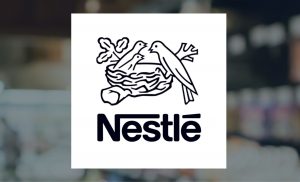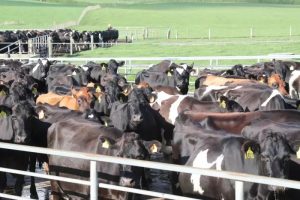
Laurent Freixe is leaning towards “guidance that we believe is achievable and hopefully beatable”.
Investors and analysts may well have to dig into the archives for the last time Nestlé reported organic growth as low as 2%.
That’s “around” the level new Nestlé CEO Laurent Freixe is guiding to after cutting the growth estimate yesterday (17 October) from the “at least” 3% envisaged by his predecessor Mark Schneider in July. Before the fiscal year started, Schneider had predicted “around” 4%.
The last time the world’s largest food manufacturer recorded such an annual print was 2.4% in 2017. If it goes beyond that this financial year, then one may have to search back before the early 2000s. Reporting organic growth of 6.2% in 2010, Nestlé said the metric had averaged 6.3% in the past decade.
It’s emblematic of the challenges for the almost 40-year Nestlé veteran, who took the helm as CEO on 1 September. Neither Freixe nor Schneider can really take all the blame. Both have, in the present and the past, pointed to the protracted softness in consumer demand for the downturn, which has been amplified by the pricing pressures linked to cost inflation food manufacturers have been facing.
While the cost pressures are now abating to a certain degree, they still remain, demonstrated by the 1.6% pricing Nestlé took in the first nine months of the 2024 fiscal year on the back of what Freixe called “unprecedented increases” over the previous two.
“In an environment characterised by softening consumer demand, we delivered steady organic sales growth with positive real internal growth,” Freixe said in his prepared remarks yesterday.
While organic growth registered at 2%, real internal growth – Nestlé’s metric that strips out the effect of pricing to reflect changes in volume – averaged out at only just positive at 0.5% year to date. It rebounded to 2.2% in the second quarter having been negative for six of the previous seven but then dipped to 1.3% in the latest reporting period.
Growth through the nine months was 2% and 1.9% for the quarter. The outlook downgrade was accompanied by cuts in earnings per share and the underlying trading operating profit (UTOP) margin, which is closely watched by analysts.
Mid-term targets
As market watchers now turn focus to Nestlé’s capital markets day on 19 November, they will be seeking affirmation that the mid-term organic growth target of 4-6% is still feasible.
Pressed during yesterday’s analyst call for an update, Freixe skirted the question.
“The portfolio is very well positioned to outperform the food and beverage industry,” was all he would say.
He later added: “What I would say is that we want to be realistic. That will be the guiding principle. We want to be realistic, face the reality, and give you a guidance that we believe is achievable and hopefully beatable.”
Whether the reorganisation of Nestlé’s business units – merging North America, Latin America and Greater China into other zones to create three geographical divisions instead of five – will do much for organic growth is debatable, but analysts are expecting some deviation from the mid-term target at the CMD.
Jefferies’ analyst David Hayes suggested Freixe could guide to a more realistic “around” 4% but such a move “threatens the valuation of both Nestlé and peers into 2025”.
He added in a research note: “We continue to see the four-year average (pre-Covid) organic sales growth of 3% per annum as more indicative of mid-term delivery. More spending behind the brands and further portfolio pruning could see circa 4% mid-term being credible.”
In the meantime, Jefferies paired its outlook for Nestlé’s organic growth in 2024 to 2% from 3.2%, and also trimmed its 2025 bet to 3% from 3.8%. The investment bank sees the UTOP margin coming in at 16.9% and 16.2% next year.
Nestlé CEO on consumer “softness”
The new Nestlé CEO had already set out his stall for the priorities ahead in an address with analysts in August, with investment to improve the group’s market share a key prerequisite toward driving top-line growth, and in turn, margin improvement.
However, the depression in consumer spending, and the conservatism to go with it, may just tie his hands. Finance chief Anna Manz suggested yesterday the environment is static at best, with demand weakness spreading beyond North America, where many other food manufacturers are challenged.
“Consumer demand has been subdued across many of our regions. In the third quarter, we saw softening demand and actions to reduce customer inventory levels,” Freixe said, as he anticipates infantry cuts by retailers to continue in the fourth quarter.
“Another key factor shaping our organic growth this year has been the normalisation of pricing, following unprecedented increases over the prior two years,” he continued.
“While market shares for billionaire brands improved, overall market share for the total group was broadly in line with the first half. More work needs to be done to drive improvement here, and this is going to be one of my key priorities going forward.”

“Soft” appeared to be the adjective of the day, with Manz telling analysts: “North America continued to see soft consumer demand and negative pricing, particularly in pet care, frozen food and coffee creamers.”
Reflecting on Europe, she said consumers “are becoming increasingly cautious and are prioritising affordability”, characteristics that were “particularly noticeable in Turkey, where there was a marked slowdown in our growth”.
In Latin America, too, Nestlé experienced “softer consumer demand” in the third quarter, while retailer inventory reductions cut RIG in the zone by 130 basis points, the CFO added.
Compounding the issue is that “economic growth is not buoyant” around the world, Freixe suggested, noting that while inflation has generally “normalised” even a 1-2% rise in prices piles on the pressure after an unprecedented run of increases.
“The RIG trajectory was influenced by softening consumer demand, particularly in the Americas and in Europe, and actions to reduce customer inventory, particularly in the Americas,” Manz said. The total impact on the metric across the group was about 60 basis points in the quarter.
Geographic pressures
Barclays analysts, led by Warren Ackerman, picked up on the softness theme as they await any tweaks Freixe might make to strategy at his first CMD as Nestlé CEO.
“The interesting point is that Nestlé’s market share picture is unchanged or slightly improved vs Q2 so this is largely related to the softness of the food and beverage categories,” they wrote.
“Although none of this is a big surprise, it is nonetheless showing how challenged categories and geographies are around the world.”
Freixe lowered the UTOP margin guidance yesterday to “around” 17%, from the “moderate increase” maintained in July from 2023’s 17.3%. It was down 40 basis points year to date from the 17.4% in the first half.
Simultaneously, underlying constant currency EPS was adjusted to “broadly flat” for fiscal 2024. Schneider cut the outlook in July to mid-single digit growth from the 6-10% put forward at the 2023 results in February.
“Nestlé’s OSG weakness was expected but this is still worse, with almost all regions slowing and inventory adjustments being required,” Barclays added.
“Europe and LatAm are the new geographies under pressure. Nestlé are hinting that there will be no material margin reset at the CMD, which is likely to disappoint investors. A big job for the new CEO.”
Margin scope
Nestlé’s margins could also get worse before they get better, Manz suggested, as she sought to quell market speculation of a decline of as much as 100-200 basis points in the new year – 2025.
“It will not be of that order of magnitude,” she told analysts. “We’ve got strong areas of competitive advantage, and this is a business that should have the sorts of high margins that we have been seeing.”
The margin will, however, be lower than 2024 but only temporarily as the investments and efficiencies sought by Freixe flow through, Manz added.
Freixe is not expected to provide guidance for 2025 until February but Barclays suggests organic growth and margins could be similar to this year – 2-3% and “at least” 16%, respectively.
“Whilst prudence is good, it will mean in our updated estimates that 2025 will be a transitional year, with the second consecutive year of negative EPS growth,” the Barclays’ team wrote. “Investors will need to look beyond 2025 and get comfortable that OSG and margins can meaningfully accelerate.”
We can connect better with our consumers, we can innovate better, and ultimately, we can gain market share.
Nestlé CEO Laurent Freixe
The new CEO was adamant that more can be done to increase Nestlé’s market shares beyond the so-called billionaire brands, which make up around three-quarters of sales, with investment the key requisite.
“This is the story of the glass half full or half empty. So, we are holding or gaining in, more or less, half of our categories,” Freixe said. ‘Is it good enough? No, it’s not good enough.’”
He added: “The environment is what it is. It’s not the most supportive, but whatever the environment, we can grow our categories. We can connect better with our consumers, we can innovate better, and ultimately, we can gain market share.”
Nonetheless, AllianceBernstein’s Callum Elliott, a consumer analyst for consumer goods companies in Europe, said the latest quarterly sales results “paint a challenging picture of the current state of the Nestlé business today”.
Elliott added: “Whilst the speed of the organisation change from new CEO Freixe could be perceived as impressive, it’s not immediately clear to us the rejigging geographical structures and reporting lines is likely to have the desired effect of ‘expanding market share’ and ‘accelerating performance.’
“Indeed, as Nestlé themselves highlight, the challenge seems to be as much at the consumer/category level, as it is a market-share problem.”
You can now read the most important #news on #eDairyNews #Whatsapp channels!!!
🇺🇸 eDairy News INGLÊS: https://whatsapp.com/channel/0029VaKsjzGDTkJyIN6hcP1K

























